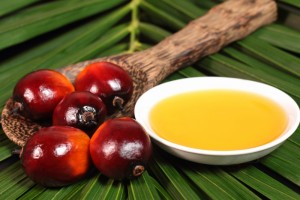 Due to its creamy consistency and incredibly intensive colour, African palm oil differs from other regular oils we are acquainted with. It can be used not only for cooing but also in cosmetics. Extracted from fruit of Elaeis guineensis, the oil is greatly appreciated by many people mainly because of its rich composition. What is the oil like? What do remain unrevealed about the African palm oil? Keep reading the article to discover a handful of less known facts on African palm oil.
Due to its creamy consistency and incredibly intensive colour, African palm oil differs from other regular oils we are acquainted with. It can be used not only for cooing but also in cosmetics. Extracted from fruit of Elaeis guineensis, the oil is greatly appreciated by many people mainly because of its rich composition. What is the oil like? What do remain unrevealed about the African palm oil? Keep reading the article to discover a handful of less known facts on African palm oil.
# It is extracted from fruit resembling European plums.
African palm oil is pressed from seeds or flesh of Elaeis guineensis fruit. Fruit of the African palm oil do resemble European plums; these growing in bunches drupes have yellow and orange colour.
# It has ten times higher concentration of beta-carotene than a regular carrot.
Extracted from Elaeis guineensis oil is the richness of beta-carotene, which is also responsible for the intensive colour of the oil. Furthermore, it contains ten times more carotene then baby carrots, and in comparison to tomatoes, African palm oil contains thirty times more of the very substance. Indeed, concentration of beta-carotene is impressive.
# Due to its strong colour, it can dye skin, hair, and clothing.
Coming back to the subject of beta-carotene, which is responsible for gifting the oil with intensive colour (as noted above), it is worth mentioning that African palm oil may dye. For that very reason, one has to be careful enough when applying the oil either to face (it might work as a kind of a self-tanner) or blond hair (possible to leave ginger reflections).
# Contains enhanced version E vitamin.
Which might be surprising, there are seven variations of E vitamin in African palm oil. The most valuable are tocotrienols, which are up to sixty times better antioxidants than the most common version of E vitamin (tocopherol) that is present in other vegetable oils.
# Does both: speeds up tanning and works as a natural UV filter at the same time.
Protective action of African palm oil makes this natural cosmetic a perfect shield against harmful action of solar radiation. What is interesting, the great concentration of beta-carotene is responsible for developing natural body suntan way faster.
# It is produced by local communities of farmers.
The source of African palm oil is in Columbia; it grows just in a few regions of this South America country. The oil is bio-certified because the methods the oil is extracted in are eco-friendly.
# It looses its precious features within four weeks since open.
Non-refined African palm oil has to be used up relatively fast. Unfortunately, the basic properties do not hold long when exposed to oxygen and the sun. Although African palm oil is one of the less stable oils, its features are highly beneficial.



